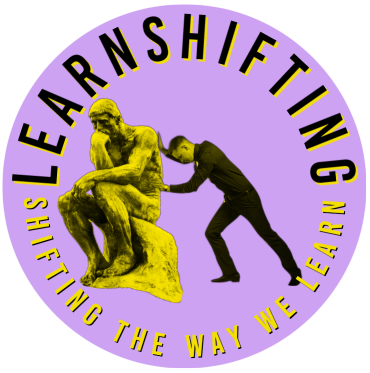I like comics. From Tin Tin to the Phantom I only wish Shakespere, Hemingway and others offered accessible comics through publishers when I was studying along with some cynic character in the margin notes pointing out what I really should be paying attention to.
Comics in Education: A Powerful Learning Tool
Comics have long been a source of entertainment, but they also hold untapped potential as educational tools.
Software for Creating Comics – My Choices
I had this section hidden down below, but it really is the main part of this post, so all the why and how of a general non-tech nature is down below. Comics are about words and pictures together published in a way that others can read, enjoy and benefit. Six tools starting with four free tools in the first video.
PowerPoint, Photoshop Camera, Adobe Firefly and Adobe Express – read on or watch video one of two that covers these tools in a comic creation context.
PowerPoint has a free template and you can get it here until mid-March 2024 then you’ll have to get it byt following the three steps on the right after opening Microsoft PowerPoint.
There are other comic templates around from folks who sell PowerPoint templates, however, I haven’t found any free ones and I wanted this first tool to be something all teachers and students have access to.
I have included a quick how-to in the video below using a sample graphic that started life as a photo taken in my front yard.

Keeping with the notion of “free”… I recommend Photoshop Camera for creating photos of extraordinary scenes in ordinary places.
Photoshop Camera, is unfortunately only available on the iPhone. If there is an Android equivalent please let me know. What does it do? With free downloadable lens plugins, you photograph a scene, yourself or a friend and create a comic drama-worthy image like this one taken quickly in my front yard.

Any yard, playground, library or classroom can be turned into a fantasy location to capture scenes for the panels of your comics. If you don’t have an iPhone, here is the same photograph dropped in Adobe Express that allows me to remove the background and insert either completely or selectively new imagery from generated AI or stock images.

Comic Life
Comic Life by a company called Plasq is what prompted me to write this post in the first place.
This is not a free app. It costs about $8 AUD on iOS and there are education versions. It costs about $30 for desktop version. I purchased both but prefer the desktop version and that is a perpetual license, not a subscription license. It comes with templates and a wide range of comic-suitable fonts. Images and text have easy-to-use editing tools and styles and effects you can add seem to be endless.
I like that using the camera on your laptop or phone combined with images created or downloaded, you can create a great comic narrative for projects, user guides, posters and more.
A visit to the museum, zoo or parliament house with photos taken by students could be transformed into a great looking piece of learning.
The app is available for Mac, Win, IOS, Android and Chromebooks. It does the comic creation part very well. It does crash, but then again a lot of software does, so make sure you back up regularly.
The epub and pdf export is okay but doesn’t allow for any Tables of Contents or metadata that would allow the epub files to be uploaded into stores like iTunes. There is a solution to that problem, but first I want to cover Comic Life via this video which I used it to share part of a recent trip to Taiwan and also to create a short visual guide on accessing Microsoft CoPilot.
I still use Adobe Express and generational AI tools like Firefly to create or enhance my graphics. Photographs are stored in Lightroom and downloaded into folders to be used in panels within the comic. I have png (transparent) logos that I can add to pages.
After the video below, I cover how you might work with your students in class on projects involving comics, but if the library has any Tin Tin or similar comics – this provides a sample for students to review in terms of speech bubble layout, captioning, image styles, fonts and more.
In the first video, I talk about why I export the comics as PDF. This is so I can embed them using flowpaper as I have done below which turns the pdf comic into a flipping book. Take a look. It is only three pages long, but you will see the flipping effect. More on that in another post.
My EdTech ICT School Context
Again, this post is presented in the context of K-12 education in my backyard of the Northern Territory with all the first-world problems of the internet never being fast enough, not enough money to purchase software or faster computers… or a computer for every child plus the omnipresent spectre of bad guys trying to break into the school network and steal, corrupt or shut down education technology systems or wet season rainclouds blocking out the satellite signals that deliver internet to those remote schools. Your education world may have similar or different challenges.
A little history of comics
Comics in different forms have been around a lot longer than the Phantom or Captain America.

The history of comics has followed different paths in different parts of the world. It can be traced back to early precursors such as Trajan’s Column (100 AD), in Rome, Egyptian hieroglyphs and the Bayeux Tapestry (70 metres long and created to depict events leading up to the Norman Conquest of England).
All of these early forms predate the explosion of book publication that followed the invention of the printing press by Johannes Gutenberg in the 15th century. Comics as we know them with panels and speech bubbles are attributed in part to Richard Outcault who during the period 1894-1896 introduced these features to his cartoons.
Why Comics in Education?
Here are eight reasons why comics can add value to education, followed by some practical ways to implement them in the classroom.
- Engagement: Comics are visually appealing and can capture students’ attention more effectively than traditional text-based materials.
- Literacy Skills: Reading comics can help students develop literacy skills, including inference, vocabulary, and understanding narrative structures.
- Visual Learning: Comics cater to visual learners, making complex ideas more accessible through images.
- Creativity: Creating comics allows students to express their creativity and imagination.
- Critical Thinking: Interpreting the relationship between text and images in comics can enhance critical thinking skills.
- Cultural Relevance: Comics often reflect societal issues, providing a platform for discussing relevant topics.
- Motivation: The interactive nature of comics can motivate reluctant readers or learners.
- Differentiation: Comics can be adapted to suit different learning abilities, making them a versatile tool in the classroom.
Implementing Comics in the Classroom
How can you create meaningful learning events for your primary or secondary students with comics?
Primary Students
- Storytelling: Encourage students to create their own comic strips to tell a story. This can be linked to a topic they are studying or a book they are reading.
- Vocabulary Building: Use comics to introduce new vocabulary. Students can create a comic strip using the new words.
- Understanding Sequences: Comics can be used to teach sequencing of events, a key component in understanding narratives.
Secondary Students
- Subject-Specific Learning: Use comics to explain complex concepts in subjects like science or history. Students can also create their own educational comics.
- Media Literacy: Analyze the portrayal of characters and events in comics to develop media literacy skills.
- Discussion Starter: Use comics dealing with societal issues as a starting point for class discussions.
Creating a comic can be a fun and rewarding process. Here are some tips to help you and your students get started:
- Write What You Know: One of the best ways to make your comics feel “true” is to write about what you know. This will also help you keep your own voice in your writing, and prevent you from copying too much from other comics1.
- Decide on a Style: Your visual style will be the first aspect of your comic that the reader encounters. Choose a style that matches both the tone of your story and the image you have in your head. Experiment with various styles until you find one that feels natural to draw and to write for1.
- Develop the Basics: A comic is a narrative told through sequential images, called frames or panels. Even a single-frame comic has to have a sense of forward movement. In that sense, a comic is not really different from any other form of storytelling, and thus follows certain conventions1.
- Come Up With an Idea: Think of a short story idea that would work well visually. You want large, easy-to-define moments. Next, work out the rough structure of your comic book. Think about the grand opening, the big plot points2.
- Create a Rough Draft: Sketch out your individual panels and add color and texture over time3.
- Choose Your Medium: Decide whether you want to make your comic by hand or digitally for a more polished look3.
Remember, there are no hard-set rules, so have fun and create something true to yourself3! Happy comic creating! 😊
In conclusion, comics are not just entertaining but also a powerful tool in education. They offer a unique combination of text and visuals that can engage students, enhance learning, and foster creativity. So, why not give comics a try in your classroom?
Creating Comics Online – Some other tools
Creating a comic online is a fun and creative process. Here are some platforms that you can use:
- Canva1: Canva offers a free comic strip maker with thousands of templates and layouts. You can start with a blank page or choose from ready-made templates. It also allows you to upload your own sketches to tell your unique story1.
- StoryboardThat2: This platform allows you to create your own comic book or graphic novel. It’s super easy to use and doesn’t require any drawing skills2.
Remember, the key to creating a great comic is to let your imagination run wild and have fun with it! Happy comic creating! 😊




